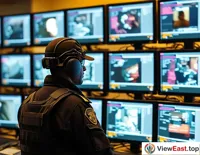







In China, the tide of artificial intelligence is sweeping across the land at an unprecedented speed, especially in the field of image recognition, where China has achieved a series of eye-catching accomplishments. This article will take you through the annals of time to explore the significant advancements China has made in image recognition technology.
I. The Genesis and Evolution of Image Recognition Technology
The development journey of image recognition, an important branch of artificial intelligence, has been nothing short of spectacular. Early image recognition technologies relied heavily on manually designed feature extraction and traditional machine learning algorithms, which were often limited by the expressiveness and generalization capabilities of features. With the rise of deep learning technology, image recognition technology has seen revolutionary breakthroughs. By training on a vast number of labeled images, deep learning models can automatically learn higher-level feature representations, greatly improving recognition accuracy.
II. Policy Support and Technological Breakthroughs
The Chinese government has given tremendous support to the development of artificial intelligence technology. The "Next Generation Artificial Intelligence Development Plan" released by the State Council has clearly outlined a three-step strategic goal, with the first step being to synchronize China's overall AI technology and applications with the world's advanced level by 2020. Driven by policy, China has entered the world's advanced ranks in technological innovation applications such as image and voice recognition, with the total number of AI invention patent authorizations ranking first globally.
III. Outstanding Performance of Chinese Enterprises
Chinese enterprises have particularly excelled in the field of image recognition. Huawei's "Kirin 970" chip, integrated with an NPU neural processing unit, possesses artificial intelligence capabilities, with an image recognition speed that can reach about 2000 images per minute. Additionally, Chinese tech companies such as Tencent and Baidu have developed high-precision facial recognition technologies applicable to fields like facial authentication and facial payment.
IV. Application Cases of Image Recognition Technology
Image recognition technology has been widely applied across various domains, including autonomous driving, medical image analysis, security surveillance, and object detection and recognition. These applications have brought numerous conveniences to society and accelerated the digital transformation and intelligent development of many industries.
V. Future Outlook
In the future, image recognition technology will continue to play a significant role in multiple fields. With continuous technological advancements, image recognition technology will focus more on user experience, improving recognition efficiency and accuracy, further driving societal and economic development.